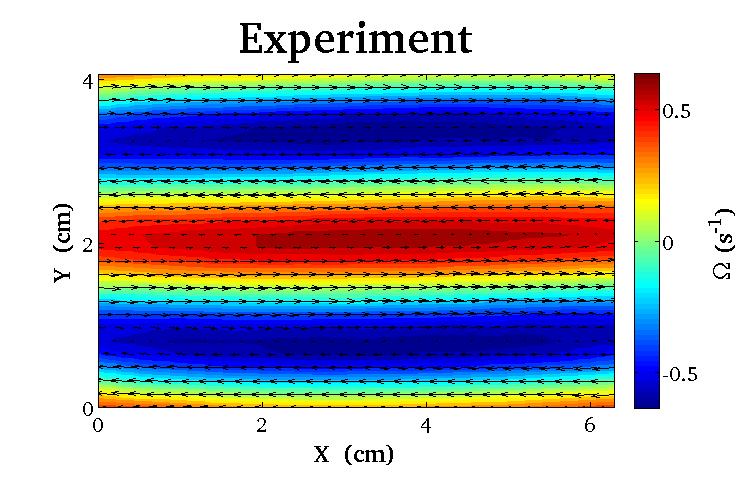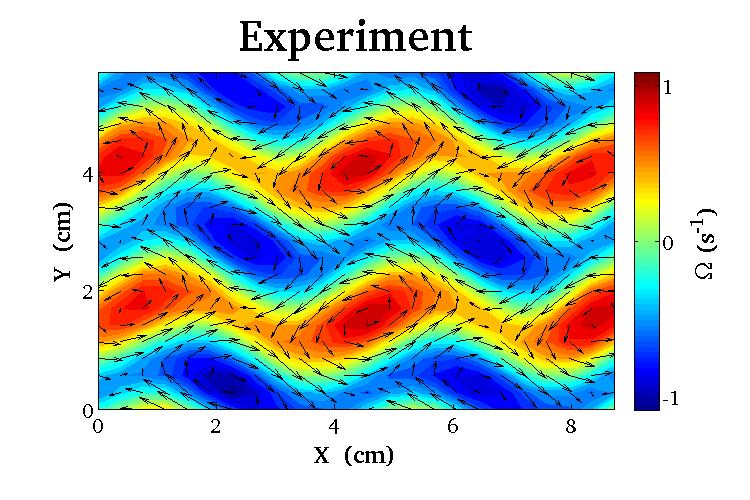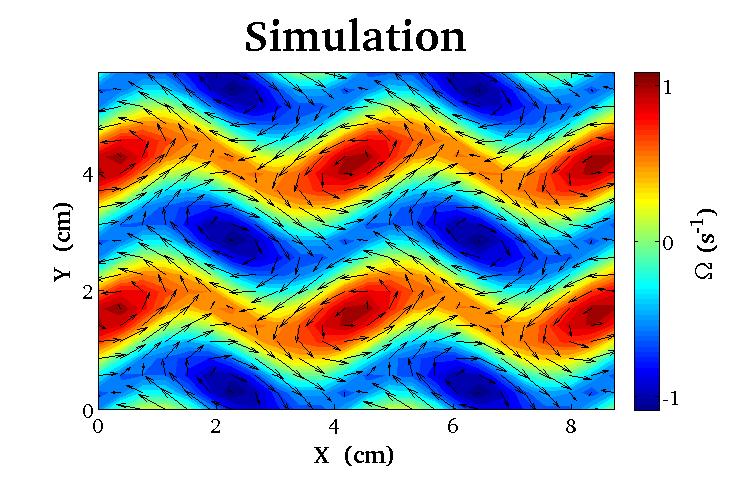Research
Bifurcations in 2D Flows
Due to their experimental accessibility and theoretical tractability, two-dimensional flows provide an ideal setting for the exploration of turbulence from a dynamical systems perspective. The specific system we study is an experimental implementation of a Kolmogorov-like flow where a thin layer of electrolyte is driven electromagnetically. Using PIV to extract the velocity fields, we quantitatively study the bifurcations that the system undergoes as it transitions to turbulence. These results are in good quantitative agreement with those from a direct numerical simulation of a two-dimensional flow model. The numerical simulation is performed by Radford Mitchell, a member of Professor Roman Grigoriev's Dynamics and Control Group. A side-by-side comparison is provided below.




Establishing a strong, quantitative agreement between the simulation and the experiment at low Reynolds numbers is crucial before working with turbulent flows at higher Reynolds numbers. Building this strong foundation in the dynamics of the two systems gives us confidence in the validity of our model as we study turbulence and search for signatures of Exact Coherent Structures.
Representative Publications
- B. Suri, J. Tithof, R. Mitchell, R.O. Grigoriev, and M.F. Schatz, "Velocity Profile in a Two-Layer Kolmogorov-Like Flow", Phys. Fluids 26, 053601 (2014).
© 2013 Schatz Pattern Formation and Control Lab | Last updated: 12-10-2013
